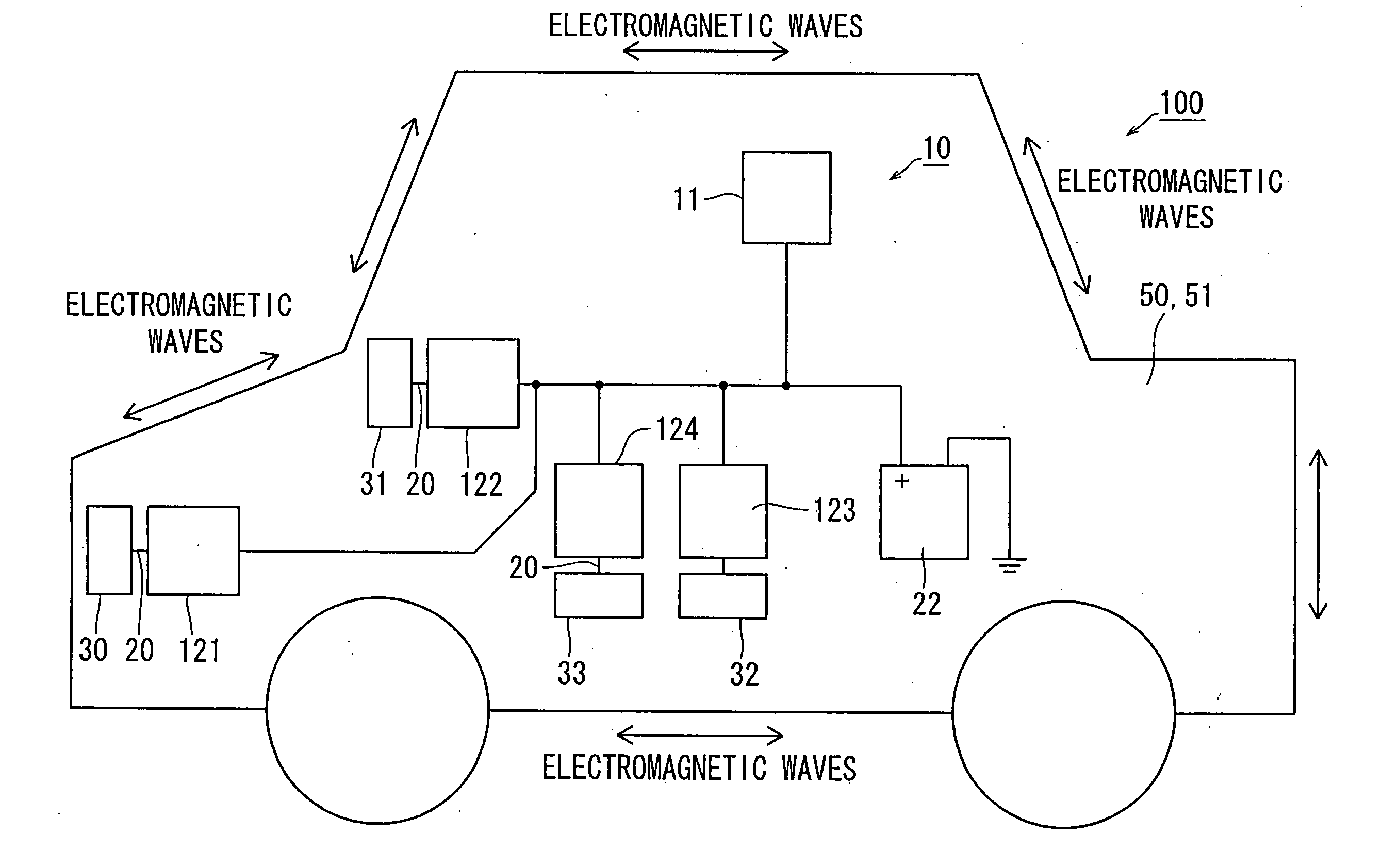Vehicle appliance control system
a technology for controlling systems and vehicles, applied in wireless systems/telephones, powerline communications applications, instruments, etc., can solve problems such as increasing the wiring space or the weight of automobiles, and achieve the effect of reducing the wiring space in the vehicle and the weight of the vehicl
- Summary
- Abstract
- Description
- Claims
- Application Information
AI Technical Summary
Benefits of technology
Problems solved by technology
Method used
Image
Examples
first embodiment
[0024] the present invention will be described with reference to FIGS. 1 to 3. Referring to FIG. 1, reference numeral 10 designates a vehicle appliance control system of the embodiment. The system 10 constitutes an automotive local area network (LAN) provided in an automobile 100 serving as a vehicle in the invention. The system 10 comprises a single main communication device 11 and a plurality of, for example, four, secondary communication devices 121 through 124. These communication devices 11 and 121-124 are dispersed at predetermined positions in the automobile 100.
[0025] The secondary communication devices 121-124 include respective electrical connectors 20 to which various appliances are connected. More specifically, for example, a headlight 30 serving as a lamp in the invention is connected to the electrical connector 20 of the first secondary communication device 121. A wiper motor 31 is connected to the electrical connector 20 of the second secondary communication device 12...
second embodiment
[0042] Referring to FIGS. 4 and 5, the vehicle appliance control system 90 of the second embodiment comprises the main communication device 11, a plurality of secondary communication devices 121-124 and couplers 170-174 provided with the communication devices 11 and 121-124. The couplers 170-174 electrically couples the power cable 21 (serving as a power line in the invention) connected to the positive pole 24 of the automotive battery 22 and supplying electric power to the electrically-driven appliance (the headlight 30, wiper motor 31 or the like) and each of the input / output circuits 16 of main and secondary communication devices 11 and 121-124 therebetween by making use of electromagnetic induction. More specifically, the couplers 170-174 comprise induction coils (not shown) as a major component and supplies, by electromagnetic induction, electric power supplied from the battery 22 through the power cable 21 into the main and secondary communication devices 11 and 121-124, the h...
PUM
 Login to View More
Login to View More Abstract
Description
Claims
Application Information
 Login to View More
Login to View More - R&D
- Intellectual Property
- Life Sciences
- Materials
- Tech Scout
- Unparalleled Data Quality
- Higher Quality Content
- 60% Fewer Hallucinations
Browse by: Latest US Patents, China's latest patents, Technical Efficacy Thesaurus, Application Domain, Technology Topic, Popular Technical Reports.
© 2025 PatSnap. All rights reserved.Legal|Privacy policy|Modern Slavery Act Transparency Statement|Sitemap|About US| Contact US: help@patsnap.com



